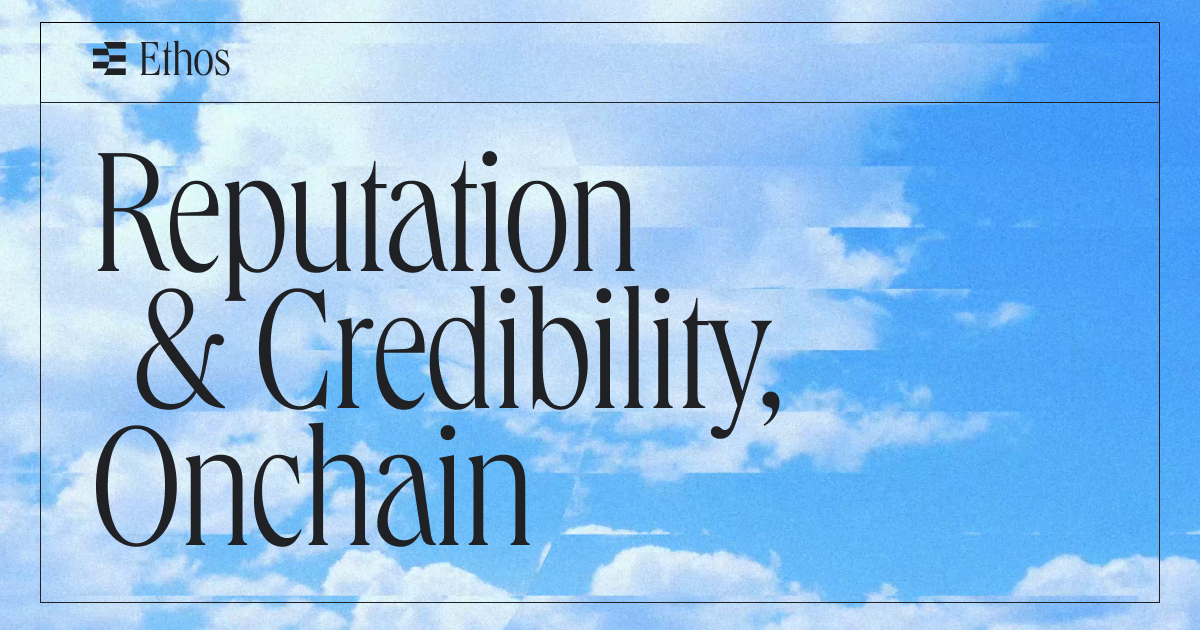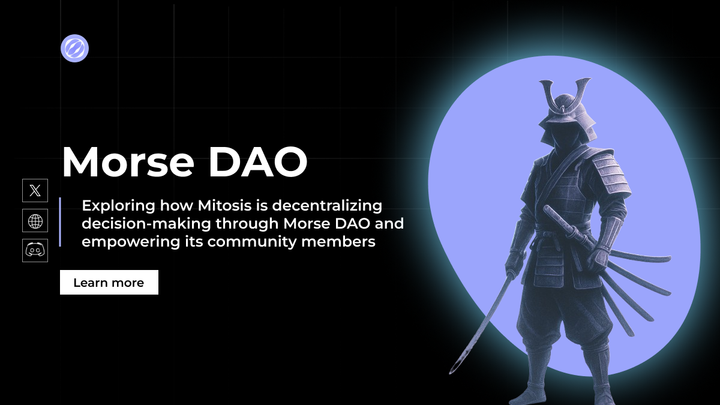Ethos: Trust in a Trustless World — Unpacking Reputation and Credibility in Crypto

In a space where anonymity is common and scams are rampant, reputation systems play a crucial role. These tools, often operating under the radar, help users navigate trust in decentralized environments—providing transparency, accountability, and signals of credibility without relying on traditional gatekeepers.
In this article, we explore how reputation and credibility systems are evolving within crypto, why they matter, and what challenges they face.
Why Reputation Still Matters in a Decentralized World
Blockchain removes the need to trust a centralized authority. It ensures that transactions can happen securely between strangers. Yet, as crypto expands—spanning DeFi, DAOs, NFTs, and decentralized social networks—reputation has reemerged as an essential ingredient.
Trust now shifts from institutions to protocols and individuals. Whether choosing a staking platform, contributing to a DAO, or evaluating a new NFT project, users are often placing confidence in people they don’t know. Without traditional identifiers or verifiable credentials, we need new systems to help us assess who’s credible and who might be looking to exploit the system.
That’s where reputation systems come in.
Core Reputation Mechanisms in Crypto
Reputation in Web3 is being built across several layers—some technical, some social. Here’s how it breaks down.
1. On-Chain Reputation Metrics
Blockchain’s transparency allows for trust signals based on user behavior. These are hard-coded, verifiable, and often immutable.
- DeFi: Platforms like Aave use on-chain data to evaluate creditworthiness, rewarding users who maintain strong borrowing and repayment records.
- DAOs: Governance activity—like proposal participation or voting history—demonstrates commitment and reliability. Communities such as MakerDAO track this to identify valuable contributors.
- NFTs: Wallets that have held early or rare assets (e.g., original CryptoPunks) often gain informal status and trust within their communities.
However, on-chain metrics are not immune to abuse. Sybil attacks—where someone creates many fake identities to manipulate systems—are a persistent concern.
2. Decentralized Identity (DID) and Verifiable Credentials
Decentralized identity systems allow users to build persistent, user-controlled reputations across platforms. Using DID protocols like Ceramic, BrightID, and ENS, individuals can collect cryptographically verifiable credentials—for example:
- A developer receives a credential from a coding bootcamp or open-source DAO.
- A trader holds a credential showing a successful trading history verified by a DEX.
These credentials are privacy-preserving, portable, and user-owned—aligning well with Web3 values. They also enable trust without relying on centralized authorities like government-issued IDs or social media logins.
3. Social and Community-Based Signals
Despite advances in decentralized tech, social credibility still matters in crypto.
- Twitter (X) activity, such as thought leadership or community engagement, can signal reputation—but it’s also susceptible to manipulation.
- Discord and Telegram channels serve as informal arenas where reputation is built through participation and helpfulness.
- Personal endorsements from respected developers, influencers, or project leads still influence public perception, especially in early-stage ecosystems.
Social trust isn’t always reliable or measurable, but it plays a vital role in helping people navigate uncharted territory.
4. Token-Curated Registries (TCRs)
TCRs aim to decentralize curation. They allow communities to create and manage lists—of trusted projects, developers, content, or resources—using token-based voting.
- Users stake tokens to nominate or challenge entries.
- High-quality entries are rewarded, while poor ones risk losing stake.
Projects like AdChain and Ocean Protocol have experimented with this model. It’s a powerful idea, but can fall victim to voter apathy, collusion, and dominance by wealthy participants.
Why Reputation Systems Matter
These mechanisms are more than just features—they’re fundamental infrastructure for a functional, scalable crypto ecosystem.
- Scam Prevention: With crypto fraud rampant, reputation tools help users distinguish between genuine projects and malicious actors.
- DAO Collaboration: In decentralized organizations, contributors often never meet. Reputation helps assign responsibilities and allocate resources wisely.
- Incentivizing Good Behavior: Contributors who provide liquidity, participate in governance, or fix bugs can be recognized and rewarded, encouraging positive participation.
- Mainstream Adoption: For new users, clear reputation signals reduce confusion and lower the risk of being exploited, making the ecosystem more welcoming.
Challenges and Trade-Offs
Designing effective reputation systems in crypto involves navigating some complex challenges:
Anonymity vs. Accountability
Pseudonymity is a core tenet of crypto culture. But full anonymity makes it hard to hold bad actors accountable. Striking a balance between protecting privacy and enforcing responsibility is one of the field’s biggest dilemmas.
Sybil Resistance
Fake identities are a major vulnerability. Without a robust way to verify personhood, reputation systems can be gamed. Solutions like Proof of Humanity, BrightID, and biometric methods (e.g., Worldcoin) are being tested, but none are perfect.
Centralization Risks
Systems that rely on trusted issuers, centralized oracles, or curated lists can easily reintroduce gatekeeping. If control consolidates in a few hands, these systems risk replicating the same power structures they were designed to eliminate.
Privacy Concerns
On-chain data is public forever. If reputation scores or credentials are stored openly, they could expose users to surveillance, profiling, or discrimination. Techniques like zero-knowledge proofs are being explored to address this, but they’re still emerging.
Cultural Context and Community Norms
What constitutes “good behavior” isn’t universal. In one DAO, voting participation might matter most. In another, code contributions or mentorship may carry more weight. Reputation systems must be flexible enough to reflect diverse values.
The Road Ahead: Where Reputation Is Headed
As Web3 continues to mature, reputation systems are becoming more critical—and more innovative. Here’s what we’re likely to see next:
- Cross-Chain Portability: Users will want their reputation to follow them across Ethereum, Solana, Polkadot, and other chains. Interoperable identity and scoring systems will be key.
- AI-Enhanced Trust Tools: AI models can synthesize on-chain data, social activity, and community behavior to help assess trustworthiness. But transparency and safeguards against bias will be essential.
- Soulbound Tokens (SBTs): These non-transferable NFTs could serve as personal, permanent badges of reputation—earned, not bought.
- Custom Community Frameworks: DAOs and projects will build their own tailored reputation models, using metrics that reflect their unique priorities.
Conclusion
Reputation in crypto isn’t about recreating the past. It’s about rethinking trust in a way that works for open, decentralized networks. Blockchain may eliminate the need to trust middlemen—but it doesn’t eliminate the need to trust people.
By developing transparent, tamper-resistant, user-centric reputation systems, we can bridge the gap between technical trustlessness and social credibility. It won’t be easy. It requires innovation, community input, and continuous iteration. But it’s worth it.
In the end, building trust in crypto isn’t just about preventing scams—it’s about enabling collaboration, rewarding value, and making Web3 a place where the best ideas and contributors can thrive.
References













Comments ()